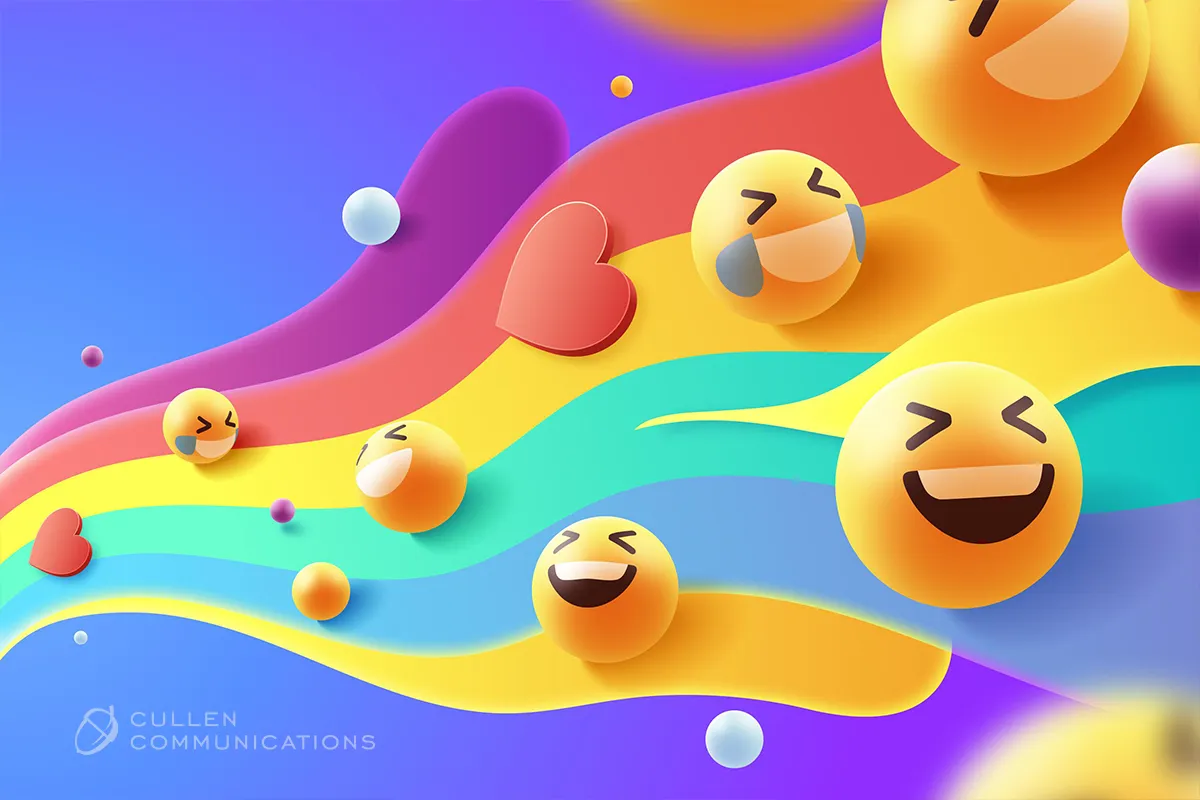‘Emoticons’ first popped on the scene in the early 1980s, as a shortcut for people to express their emotions. Fast forward a decade, when its successor, the ‘Emoji’, popped up in Japan and gained widespread popularity with the advent of smartphones and instant messaging applications. The term “emoji” itself combines the Japanese words “e” (meaning “picture”) and “moji” (meaning “character”).
In today’s era of rapid and constant communication, emojis are being sent over 6 billion times a day.
From a simple smiley to more complex and nuanced emotions, these symbols have found their way into everyday conversations – but their impact goes way beyond casual chatting.
Relevant Insights
Visual language
Emojis have changed the landscape of communication.
They have altered the way we structure our text messages, and even how we read text. Instead of relying solely on words, emojis allow us to communicate ideas and emotions visually and instantly. They are most used by younger people but easily accessed and understood by people of all ages and languages, allowing for wider communication globally.
Enhancing emotions
Words are not always enough to express our emotions.
In today’s visual age, we rely heavily on imagery. So, where tone and context can be misplaced over text, a simple thumbs-up, heart or laughing face can transform a sentence, making it easier for the recipient to understand what the sender really meant to say.

Engaging social media content
Brands and agencies understand the power of incorporating emojis into social media campaigns and content strategies.
By leveraging the instant appeal of emojis, communication agencies can craft visually appealing messages that resonate with their target audience, leading to increased brand visibility and improved communication. Emojis and an engaging caption can make a brand or influencer appear relaxed, inviting and less corporate.
Challenges for PR and communications agencies
While emojis have undoubtedly added a new dimension to the way we communicate. They also present unique challenges for communication professionals.
Firstly, misunderstandings can occur when emojis are not universally understood, or where their meaning varies across different cultures. As there has been strong calls to diversify the emojis, it is important that agencies keep up to date with the latest nuances and adapt with the ever-changing emoji landscape. Agencies must always take care not to inadvertently offend or confuse the target audience.
Secondly, emojis should not be seen as a replacement for thoughtful and well-crafted messages. They should complement the text and add value to the overall message. PR pros must strike a balance between effectively using emojis and maintaining the professionalism of their clients’ brand image – a fine line that many brands may struggle with.
World Emoji Day
Emojis are so prevalent in our culture that we now celebrate “World Emoji Day” on 17th July. On World Emoji Day, people around the world participate in emoji-related activities and events including social media campaigns, emoji-themed parties and art contests, as well as discussions about the impact of emojis on communication and culture.

Warmth and connection
Overall, though, who doesn’t love an emoji?
They are a quick, creative and individual way to foster warmth and connection in digital communications, conveying countless emotions with a single click. If you’d like to find out more about how we create compelling content strategies for our clients, we’d love to talk to you. 😉

